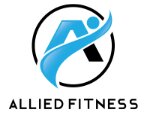Exercising with Cerebral Palsy
If you have Cerebral Palsy (CP) you may not have considered the benefits exercise can have for you. If you know or work with someone with cerebral palsy and aren’t too sure how working with an Exercise Professional can help them then I’m here to provide some answers.
If you’re unsure exactly what Cerebral Palsy is, it is described by Rosenbaum (Rosenbaum, et. Al, 2007) as a group of permanent disorders of the development of movement and posture, causing activity limitation, that are attributed to non-progressive disturbances that occurred in the developing foetal or infant brain. With cerebral meaning brain and Palsy meaning lack of muscle control, Cerebral Palsy is then categorised by the type of movement, the body part and the severity.

The following statistics from Cerebral Palsy Alliance and Cerebral Palsy Australia demonstrate just how prevalent this condition is in our society.
- In Australia, around 600 to 700 infants are born with CP each year.
- It is the most common physical disability in childhood.
- In Australia, it is estimated that a child is born every 15 hours that has or will develop CP. (1/700)
- 17 million people worldwide have cerebral palsy
So how can exercise help?
There are other co-morbidities that are generally associated with CP. Due to the reduced levels of mobilisation and increased sedentary behaviour, over time this can contribute to increasing metabolic risk factors and other chronic conditions such as increased cholesterol leading to heart problems. It can also lead to or cause problems with the joints due to poor load distribution or simply not being used, strength training can help with this.
Decreased use of muscles can also reduce abilities for day to day tasks, wheelchair transfers or fatigue and soreness with the use of other walking aids. Reduced muscular strength can also impact the individuals balance and gait.

As each individual with cerebral palsy is different in terms of abilities and limitations an Exercise Physiologist can work with clients to develop an individualised program. Increasing strength in the lower body can help with gait or standing up out of a chair, whereas increasing strength in the upper body can help with lifting or reduce muscular fatigue with walking aids or from being in a certain position for prolonged periods of time.
Exercise Physiologists can also work with clients on aerobic fitness and balance as it helps to reduce the risk of falls which can lead to other complications.
Not only does exercise have physical benefits it also helps with cognitive ability, mental health and the social aspect of interacting with others in either an individual or group setting. The current research both supports and encourages both aerobic training and strength training.
At Allied Fitness Australia we currently do a lot of work with the NDIS and see a lot of clients with Cerebral Palsy. We work closely with support coordinators, family members and individuals to help reach their goals, including increasing ability with activities of daily living as well as addressing other co-morbidities. For those who are unable to reach our facilities we also offer home visits.
If you do have funding with the NDIS you can access Exercise Physiology and Dietician services under both the improved health and wellbeing. Exercise Physiology can also be accessed under the improved daily living category.
If you are self-managed, Agency managed or Plan managed we work with the nominated providers in arranging service agreements through to the delivery of services.
If you would like more information on how we can help you or if you are unsure on your funding or eligibility please get in touch and organise a complimentary consultation with one of our Exercise Physiologists or dieticians today.
